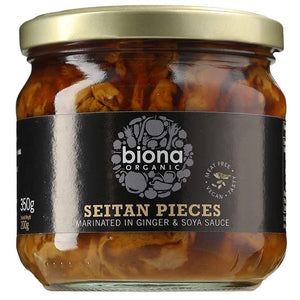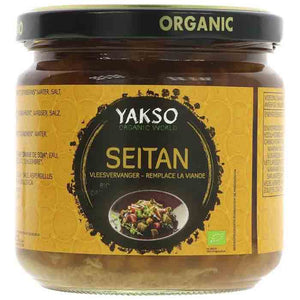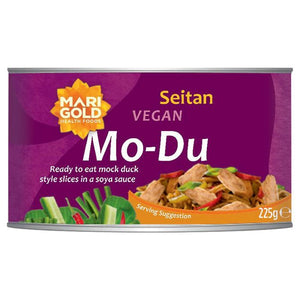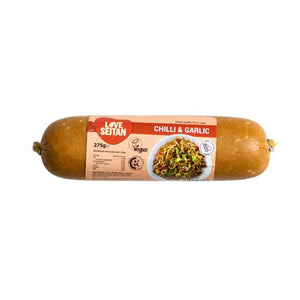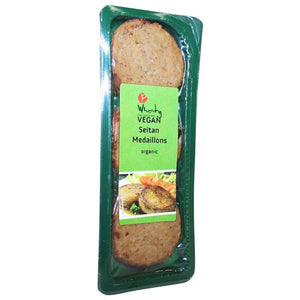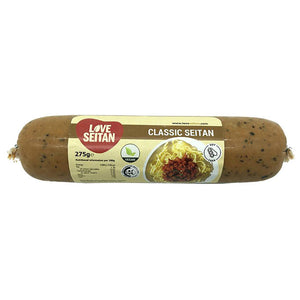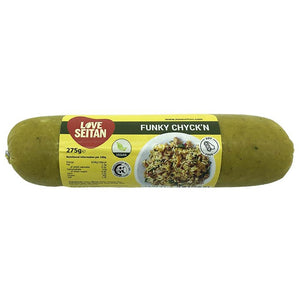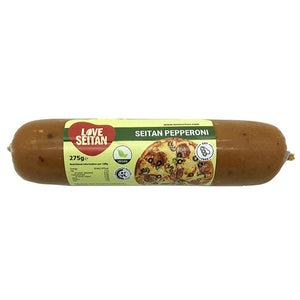Seitan
Seitan, as you can probably already tell, is a meat alternative. But what is it made of? Seitan is actually made from gluten. That’s why it was given the name “wheat meat.” You can also call this meat just gluten, gluten meat, and even vital wheat gluten.
You’ll probably be surprised to know that seitan started in China! Buddhists would actually eat seitan as their meat substitute - just like we do now. Some of their meals were even made with different takes on seitan, such as seitan noodles. In Chinese cuisine, they can be fried, deep-fried, braised, steamed, and even boiled. Organic seitan is incredibly versatile in that regard! Read more
Sort By ×
- Featured
- Price, low to high
- Price, high to low
- Alphabetically, A-Z
- Alphabetically, Z-A
- Date, old to new
- Date, new to old
- Best Selling
Seitan, the word itself, has Japanese roots. Pronounced say-tan, the word is a portmanteau of sei and tan which means fresh or raw and protein, respectively.
You can get seitan uncooked or unprepared - think similar to pre-cooked, fresh tofu. But, you can also buy seitan that has been marinated or pre-cooked. The best way to get familiar with seitan is by actually getting some yourself Some of the best seitan brands out there can be found here at PlantX. Give them a look and maybe get one, two, or a bunch!
What Do I Do With Organic Seitan?
Let’s go back to China. Seitan, or miànjīn, comes in three varieties in Chinese cuisine. You can get baked, steamed, or oil-fried gluten - the latter being more common. Oil-fried seitan accompanies soups, stews, and congee quite well as they complement texture-wise. Steamed seitan can be used for making cold noodle dishes or dressed with fresh vegetables. Baked spongy seitan falls somewhere in the middle and can be used in many ways, such as braised with mushrooms.
In Japan, seitan looks bread-like and is often called fu. We can draw cooking inspo from how they prepare seitan there like raw/steamed or baked. Raw fu is used to make traditional Japanese confectionery and is sometimes sweetened and filled with red bean paste. Dry seitan’s use is more familiar, being a wonderful spongy ingredient to soups and broths.
In the west, seitan’s most common use is for substituting meat. If you think about it, we actually cook and prepare seitan as the Chinese monks do. We fry, deep-fry, braise, steam, and boil seitan just like them.
Here are a couple of great seitan products to try. Get Love Seitan’s Funky Chyck'n Seitan Chub and Chilli & Garlic Seitan Chub.
Tofu vs Tempeh vs Seitan - What’s The Difference?
Great question and there’s a simple answer for that - tofu and tempeh are both products of soybeans. Seitan, on the other hand, is made from wheat. Seitan is actually made by washing flour dough until the desired consistency is reached.
Like tofu, seitan can come in different textures. You can actually get a variety of soft tofu to firm tofu. Seitan, depending on how long you spend making it, can appear softer or firmer. Tempeh, however, is commonly firm and rather spongy. And yes, textures matter in cooking!
The three are similar in flavour profile, although tempeh has a more earthy, nutty tang to it. Tofu and seitan don’t have much flavour themselves, being rather bland at times. But they certainly make up for it - they soak up sauces and deliver the seasoning of marinades very well. Think of them as the perfect base to your recipes.
That said, the three of them are also all used as an alternative to meat. You can make them taste however you want to with just the right seasoning. They each bring something new to the table so we recommend trying them all if you could so that you can learn which one you like best.
Frequently Asked Questions
Can I eat seitan if I have a gluten intolerance?
That’s a huge no. You cannot have seitan if you cannot have gluten. It’s called gluten meat for a reason!
If you can’t have gluten and are shopping at PlantX, we recommend you use our handy filter. When you go to a category page, you’ll be met with a lot of products. There's usually a gluten-free product filter on the left! Just give that a click and all the gluten-free options are now sorted for you.
Is seitan made from soy?
No, it is not! We understand the confusion as it may look similar to tofu or tempeh at times, but seitan is usually not made from soy at all. You might find some seitan products that add soy here and there - especially if they are sold as meat alternatives like burgers and sausages.
Just check the ingredient list to make sure, especially if you aren't allowed to have soy.
What does organic seitan taste like?
Organic seitan, on its own, does have a similar taste to plain chicken or mushroom (portobello, to be exact). It has a neutral taste that makes it a great base for cooking. With some effort, you can make seitan taste like regular proteins!
What is the texture of organic seitan like?
Seitan is made by washing wheat flour dough with water. This results in a somewhat sticky and elastic “mass” that has a chewy and a bit spongy texture. Seitan can be made firmer and a bit softer as well. That would only depend on how it has been made.
Different textures yield different dishes. We mentioned trying out seitan to learn how to cook it - we strongly recommend that you do!
Where can I buy seitan?
With its growing popularity, a lot of supermarkets and groceries already started to sell seitan.
Setian and organic seitan can also be bought online - especially here at PlantX! We have done all the work and worrying for you so that you can have only the best seitan brands out there. So, shop (and eat) in confidence!
